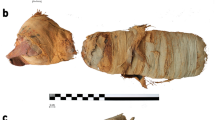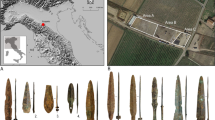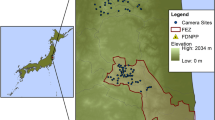Abstract
Hebeloma vinosophyllum Hongo is a terrestrial agaric originally found in broad-leaved and conifer forests but not described as having any special ecological requirements1. It now seems that this species often fruits where a dead mammal has been buried.
This is a preview of subscription content, access via your institution
Access options
Subscribe to this journal
Receive 51 print issues and online access
$199.00 per year
only $3.90 per issue
Buy this article
- Purchase on Springer Link
- Instant access to full article PDF
Prices may be subject to local taxes which are calculated during checkout
Similar content being viewed by others
References
Hongo, T., J. Jap. Bot., 40, 311–318 (1965).
Sagara, N., Contr. biol. Lab. Kyoto Univ., 24, 205–276 (1975).
Mueller, B., Gerichtliche Medizin (Springer, Berlin, Göttingen and Heidelberg, 1953).
Kühner, R., and Romagnesi, H., Flore analytique des champignons supérieurs (Masson, Paris, 1953).
Author information
Authors and Affiliations
Rights and permissions
About this article
Cite this article
SAGARA, N. Presence of a buried mammalian carcass indicated by fungal fruiting bodies. Nature 262, 816 (1976). https://doi.org/10.1038/262816a0
Received:
Accepted:
Published:
Issue Date:
DOI: https://doi.org/10.1038/262816a0
This article is cited by
-
Cadaver decomposition in terrestrial ecosystems
Naturwissenschaften (2006)
-
Experimental and physiological ecology of ammonia fungi: studies using natural substrates and artificial media
Mycoscience (2006)
-
Occurrence of Hebeloma vinosophyllum on the forest ground after decomposition of crow carcass
Mycoscience (2000)
Comments
By submitting a comment you agree to abide by our Terms and Community Guidelines. If you find something abusive or that does not comply with our terms or guidelines please flag it as inappropriate.



